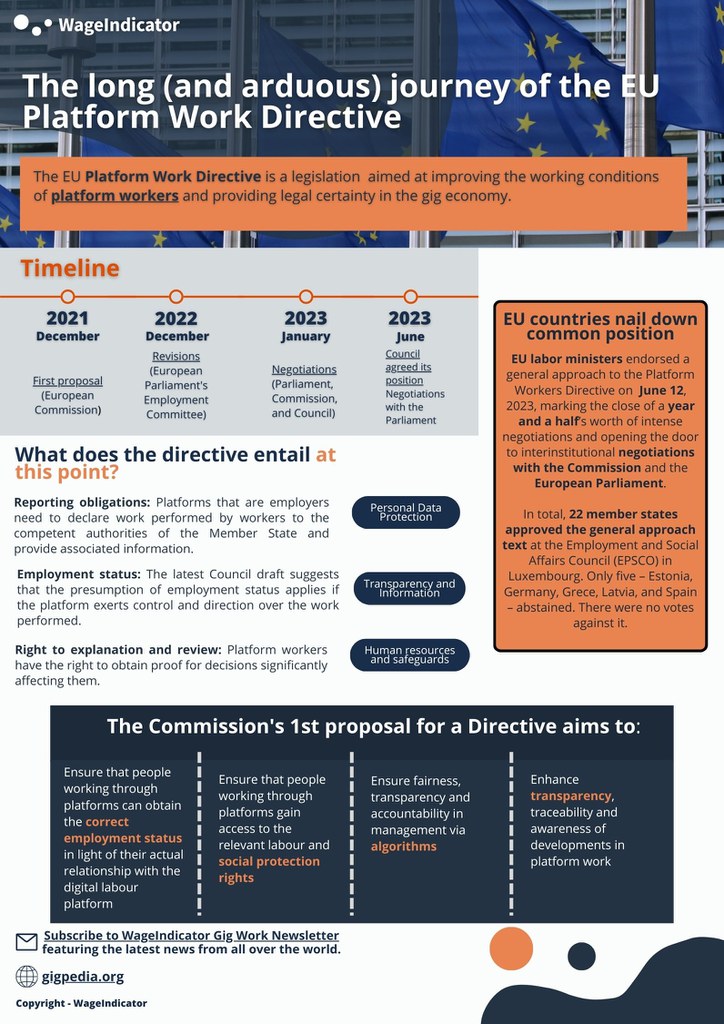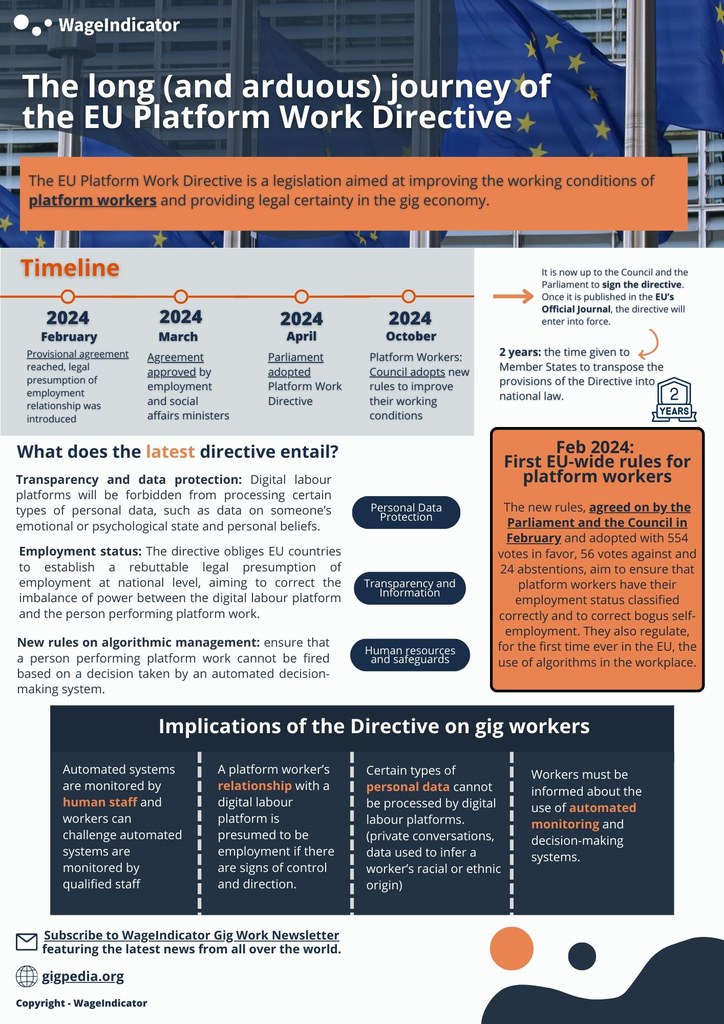TEXT VERSION
The long (and arduous) journey of the EU Platform Work Directive
The EU Platform Work Directive is a legislation aimed at improving the working conditions of platform workers and providing legal certainty in the gig economy.
Timeline
2021 December
First proposal (European Commission)
2022 December
Revisions (European Parliament's Employment Committee
2023 January
Negotiations (Parliament, Commission, and Council)
2023 June
Council agreed its position
Negotiations with the Parliament
What does the directive entail at this point?
Reporting obligations: Platforms that are employers need to declare work performed by workers to the competent authorities of the Member State and provide associated information.
Employment status: The latest Council draft suggests that the presumption of employment status applies if the platform exerts control and direction over the work performed.
Right to explanation and review: Platform workers have the right to obtain proof for decisions significantly affecting them.
EU countries nail down common position
EU labor ministers endorsed a general approach to the Platform Workers Directive on June 12, 2023, marking the close of a year and a half’s worth of intense negotiations and opening the door to interinstitutional negotiations with the Commission and the European Parliament.
In total, 22 member states approved the general approach text at the Employment and Social Affairs Council (EPSCO) in Luxembourg. Only five – Estonia, Germany, Grece, Latvia, and Spain – abstained. There were no votes against it.
The Commission's 1st proposal for a Directive aims to:
Ensure that people working through platforms can obtain the correct employment status in light of their actual relationship with the digital labour platform
Ensure that people working through platforms gain access to the relevant labour and social protection rights.
Ensure fairness, transparency and accountability in management via algorithms.
Enhance transparency, traceability and awareness of developments in platform work.
2024
February
Provisional agreement reached, legal presumption of employment relationship was introduced
First EU-wide rules for platform workers
The new rules, agreed on by the Parliament and the Council in February and adopted with 554 votes in favor, 56 votes against and 24 abstentions, aim to ensure that platform workers have their employment status classified correctly and to correct bogus self-employment. They also regulate, for the first time ever in the EU, the use of algorithms in the workplace.
2024
March
2024
October
Platform Workers: Council adopts new rules to improve their working conditions
It is now up to the Council and the Parliament to sign the directive. Once it is published in the EU’s Official Journal, the directive will enter into force.
2 years: the time given to Member States to transpose the provisions of the Directive into national law.
What does the latest directive entail?
Transparency and data protection: Digital labour platforms will be forbidden from processing certain types of personal data, such as data on someone’s emotional or psychological state and personal beliefs.
Employment status: The directive obliges EU countries to establish a rebuttable legal presumption of employment at national level, aiming to correct the imbalance of power between the digital labour platform and the person performing platform work.
New rules on algorithmic management: ensure that a person performing platform work cannot be fired based on a decision taken by an automated decision-making system.
Implications of the Directive on gig workers
Automated systems are monitored by human staff and workers can challenge automated systems are monitored by qualified staff
A platform worker’s relationship with a digital labour platform is presumed to be employment if there are signs of control and direction.
Certain types of personal data cannot be processed by digital labour platforms. (private conversations, data used to infer a worker’s racial or ethnic origin)
Workers must be informed about the use of automated monitoring and decision-making systems.


